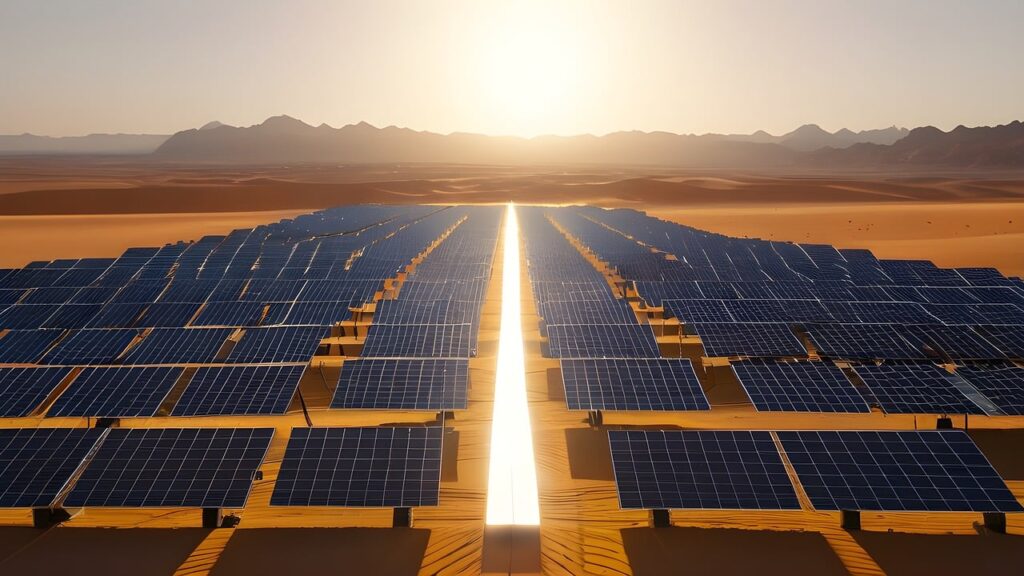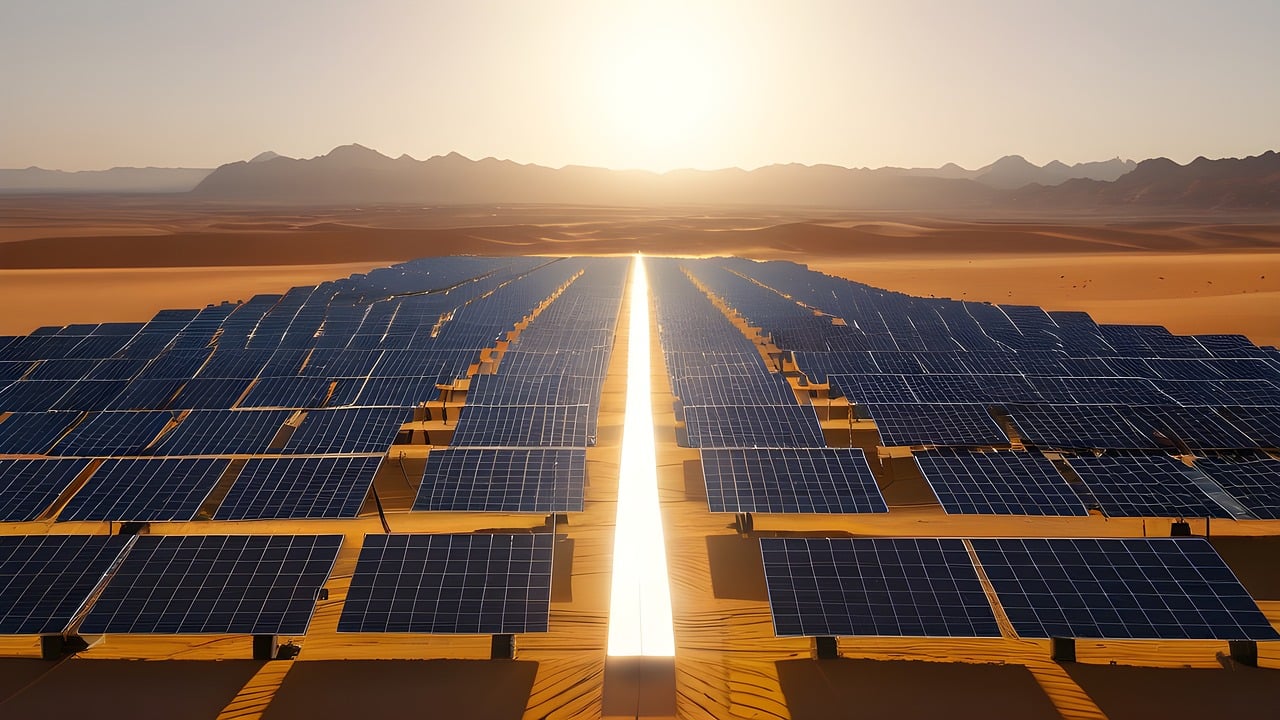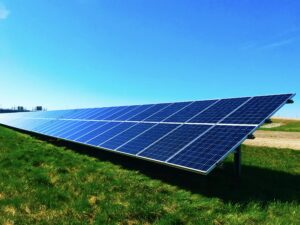Let’s talk about solar energy, shall we? It’s a fascinating topic that’s been gaining more and more attention in recent years. But what exactly is solar energy? Put simply, it’s the radiating light and heat that we receive from the sun. This abundant source of energy has the potential to revolutionize our world and pave the way to a more sustainable future. So, let’s explore the wonders of solar energy and discover how it can power our lives in the most efficient and environmentally friendly way possible.

Definition of Solar Energy
Explanation of solar energy
Solar energy is the energy derived from the sun, which is harnessed and converted into usable forms of power. It is a renewable and sustainable source of energy that has gained significant attention in recent years due to its numerous benefits and environmental advantages. Solar energy is abundant and widely available, making it a viable alternative to traditional fossil fuels.
How solar energy works
Solar energy is generated through the use of solar panels, also known as solar photovoltaic (PV) systems. These panels contain photovoltaic cells that absorb sunlight and convert it into direct current (DC) electricity. An inverter is then used to convert the DC electricity into alternating current (AC) electricity, which can be used to power homes, businesses, and other electrical devices.
Advantages of Solar Energy
Renewable and sustainable
One of the greatest advantages of solar energy is that it is a renewable and sustainable source of power. Unlike fossil fuels, which are limited and will eventually run out, sunlight is an abundant resource that will continue to be available for billions of years. By harnessing solar energy, we can reduce our reliance on non-renewable energy sources and decrease our carbon footprint.
Reduces electricity bills
Another significant advantage of using solar energy is that it can greatly reduce electricity bills. Once a solar energy system is installed, it generates free electricity from the sun, offsetting the amount of power that needs to be purchased from the grid. This can lead to substantial savings over time, especially when considering the rising costs of traditional energy sources.
Low maintenance
Solar energy systems require very little maintenance compared to other forms of power generation. Once the panels are installed, they generally have a long lifespan and do not require frequent servicing. Regular cleaning to remove dirt and debris is often the only maintenance needed. This low maintenance requirement makes solar energy a hassle-free option for homeowners and businesses alike.
Environmental benefits
Solar energy is a clean and environmentally friendly source of power. Unlike fossil fuels, which release harmful greenhouse gases into the atmosphere when burned, solar energy systems produce no emissions during operation. By using solar power, we can significantly reduce air pollution, mitigate climate change, and protect the environment for future generations.

Applications of Solar Energy
Solar power for residential use
Solar energy is widely used in residential buildings as a means of reducing electricity costs and increasing energy independence. Homeowners can install rooftop solar panels to generate their own electricity, which can be used to power appliances, heat water, and even charge electric vehicles. Many governments also offer incentives and subsidies to encourage residential solar installations.
Solar power for commercial use
Solar energy is also extensively utilized in commercial buildings, such as offices, warehouses, and factories. Large-scale solar installations on rooftops or open areas can generate a significant amount of electricity, helping businesses reduce their reliance on the grid and lower their operational costs. Additionally, companies that invest in solar energy demonstrate their commitment to sustainability and environmental responsibility.
Solar power in agriculture
Solar energy has proven to be beneficial in the agricultural sector as well. Farmers can use solar-powered irrigation systems to water their crops, reducing the need for fossil fuel-powered pumps and lowering operational costs. Solar energy can also be utilized for powering agricultural machinery, drying crops, and providing electricity to remote farming communities.
Solar power in transportation
Solar energy is increasingly being integrated into the transportation sector as a clean and sustainable power source. Solar panels can be used to charge electric vehicles (EVs), extending their range and reducing the reliance on conventional charging stations. Solar-powered charging stations can also be set up in parking lots and highways, enabling EV owners to charge their vehicles using renewable energy.
Types of Solar Energy Systems
Solar photovoltaic (PV) systems
Solar photovoltaic (PV) systems are the most common type of solar energy systems used today. These systems consist of solar panels that convert sunlight into electricity through the photovoltaic effect. The generated electricity can be used immediately or stored in batteries for later use. PV systems are versatile and can be installed on rooftops, in open fields, or even integrated into building materials.
Solar thermal systems
Solar thermal systems harness the heat energy from the sun and convert it into usable heat or hot water. This technology is commonly used for heating water in homes, swimming pools, and commercial buildings. Solar thermal systems use solar collectors to absorb sunlight, which then heats a fluid that is circulated through a heat exchanger, transferring the thermal energy to the desired application.

Components of a Solar Energy System
Solar panels
Solar panels, also known as photovoltaic modules, are the key component of a solar energy system. These panels contain photovoltaic cells made of semiconductor materials, such as silicon, which absorb sunlight and convert it into electricity. Multiple panels are connected together to form an array, allowing for the generation of larger amounts of electricity.
Inverter
The inverter is an essential component of a solar energy system as it converts the direct current (DC) electricity generated by the solar panels into alternating current (AC) electricity, which is used to power electrical devices. Inverters also ensure that the solar energy system operates efficiently and safely by monitoring the voltage and current levels.
Battery storage
Battery storage is an optional component of a solar energy system but can be beneficial for storing excess energy generated during the day for use during the night or periods of low sunlight. Batteries allow for greater energy independence and can provide backup power in case of grid outages. They store the converted electricity from the solar panels and release it as needed.
Charge controller
A charge controller is used to regulate and control the charging of batteries in a solar energy system. It prevents overcharging or deep discharging of the batteries, prolonging their lifespan and ensuring the efficient use of stored energy. Charge controllers also protect the batteries from damage caused by temperature variations or electrical surges.
Solar Energy in Everyday Life
Solar-powered devices
Solar energy is utilized in numerous devices that we use in our daily lives. From solar-powered calculators and outdoor lighting to portable chargers and backpacks with built-in solar panels, solar energy enables us to power our small electronic devices without relying on traditional batteries or outlets. These devices provide a convenient and eco-friendly way to stay connected and powered on the go.
Solar-powered vehicles
Solar energy is also making its way into the transportation sector with the development of solar-powered vehicles. Solar cars, bikes, scooters, and boats are becoming increasingly popular due to their ability to use renewable energy sources for propulsion. Solar panels integrated into the vehicles’ surfaces capture sunlight and convert it into electricity, extending their range and reducing the need for conventional energy sources.
Solar water heating systems
Solar water heating systems are a common application of solar energy in homes. These systems use solar thermal collectors to capture the heat energy from the sun and transfer it to water, providing an efficient and cost-effective alternative to traditional water heaters. Solar water heating systems can significantly reduce the amount of electricity or gas needed to heat water, resulting in energy savings and reduced carbon emissions.

Solar Energy and the Environment
Reduces greenhouse gas emissions
Solar energy plays a crucial role in reducing greenhouse gas emissions and combatting climate change. By replacing fossil fuel-based electricity generation with solar power, we can significantly reduce the release of carbon dioxide and other harmful greenhouse gases into the atmosphere. This transition to clean energy sources is essential for mitigating the effects of global warming and ensuring a sustainable future.
Conserves water resources
Traditional electricity generation methods, such as coal and natural gas power plants, consume vast amounts of water for cooling purposes. Solar energy, on the other hand, does not require water for operation, making it a water-conserving alternative. By reducing our reliance on water-intensive energy sources, we can protect our water resources, especially in regions prone to drought or water scarcity.
Minimizes air pollution
Burning fossil fuels for electricity generation contributes to air pollution, releasing harmful pollutants such as sulfur dioxide, nitrogen oxides, and particulate matter. Solar energy systems generate electricity without burning any fuel, eliminating these harmful emissions. The promotion of solar power not only improves air quality but also has positive impacts on public health by reducing the risk of respiratory diseases and other health issues associated with air pollution.
Challenges and Limitations of Solar Energy
Intermittent energy source
One of the main challenges of solar energy is its intermittency. Solar power generation relies on sunlight, which is not available 24/7. During cloudy days or at night, solar panels cannot generate electricity, requiring the use of energy storage systems or alternative power sources. Advances in battery technology and the integration of smart grid systems are helping to address this challenge and ensure a smoother transition to solar energy.
Cost of installation
While the operational costs of solar energy systems are relatively low, the initial installation cost can be a significant barrier for many individuals and businesses. However, the cost of solar panels and associated equipment has been steadily decreasing over the years, making solar energy more affordable and accessible. Government incentives, tax credits, and financing options further help to make solar installations more economically viable.
Dependent on sunlight availability
Solar energy production is reliant on the availability of sunlight, which can vary depending on factors such as location, time of year, and weather conditions. Areas with low sunlight intensity or frequent cloud cover may have reduced solar energy potential. However, even in regions with less favorable solar conditions, solar energy can still provide a significant portion of the electricity needs, especially when combined with energy storage and grid connectivity.
Future of Solar Energy
Advancements in solar technology
The future of solar energy looks promising, with ongoing advancements in technology and research. Scientists and engineers are continuously working on improving the efficiency of solar panels, increasing their lifespan, and reducing their manufacturing costs. Emerging technologies such as perovskite solar cells and solar paint hold the potential to revolutionize solar energy generation and make it even more widespread.
Integration with other renewables
Solar energy can be integrated with other renewable energy sources, such as wind and hydroelectric power, to create a more reliable and consistent energy supply. By combining different renewable technologies, we can overcome the intermittency challenge associated with solar energy and ensure a stable electricity grid. This approach, known as hybrid renewable systems, offers enhanced energy reliability and a greener energy mix.
Increased adoption and affordability
As solar energy becomes more mainstream and affordable, we can expect to see a significant increase in its adoption worldwide. Governments, businesses, and individuals are recognizing the value and benefits of solar power and are investing in large-scale solar projects. The continued growth of the solar industry will drive technological advancements, increase competition, and further reduce the cost of solar energy, making it a more attractive option for everyone.
Conclusion
Solar energy is a renewable and sustainable source of power that offers numerous advantages over traditional fossil fuel-based electricity generation. It is environmentally friendly, reduces electricity bills, and requires low maintenance. Solar energy finds applications in residential, commercial, agricultural, and transportation sectors. The two main types of solar energy systems are solar photovoltaic (PV) and solar thermal systems. Key components of a solar energy system include solar panels, inverters, battery storage, and charge controllers. Solar energy is integrated into everyday life through solar-powered devices, vehicles, and water heating systems. It also has significant environmental benefits, such as reducing greenhouse gas emissions and conserving water resources. While solar energy faces challenges and limitations, advancements in technology, integration with other renewables, and increased adoption and affordability hold promise for its future. The transition to solar energy and other renewable sources is crucial for achieving a more sustainable and cleaner energy future.




